Klue Compete
The Competitive Enablement Platform
Learn More
INTRODUCING KLUE INSIGHTS
FIND OUT MORE >

One day there was nothing. The next, there was something.
That’s the way it went for Alex Mcdonnell when he built InVision’s Competitive Intelligence Program from the ground up.
Now, as Market and Competitive Intelligence Lead at Airtable, he’s bringing his years of experience in competitive enablement and making things happen.
He also recently launched a course called Competitive Intelligence Certified with our friends over at the Product Marketing Alliance.
Alex sat down with Adam McQueen in the latest episode of the Competitive Enablement Show to share his wisdom on:
Listen to the episode on Spotify, Apple Podcasts, or wherever you get your podcasts
Your compete program is only as good as the intelligence you gather, how you curate that intelligence, and how you distribute it.
Each of those components will be most effective when you’re in lockstep with the teams you’re enabling. To get there, you need to spend time building relationships.
For Alex, it starts with getting a handle on the wants and needs of customer-facing teams. But that’s just the start.
“That’s kind of the historical bias: for sales support functions. But bringing in CSMs (Customer Success Managers) and maybe even growth account executives or account managers into the picture has been super important.”
Beyond CSMs, Solution engineers, sales engineers, and other technical sellers all have a ton of insight that will be valuable to your compete program.
But since you can’t be everywhere at once, start with sales and your customer success team to set the foundation.
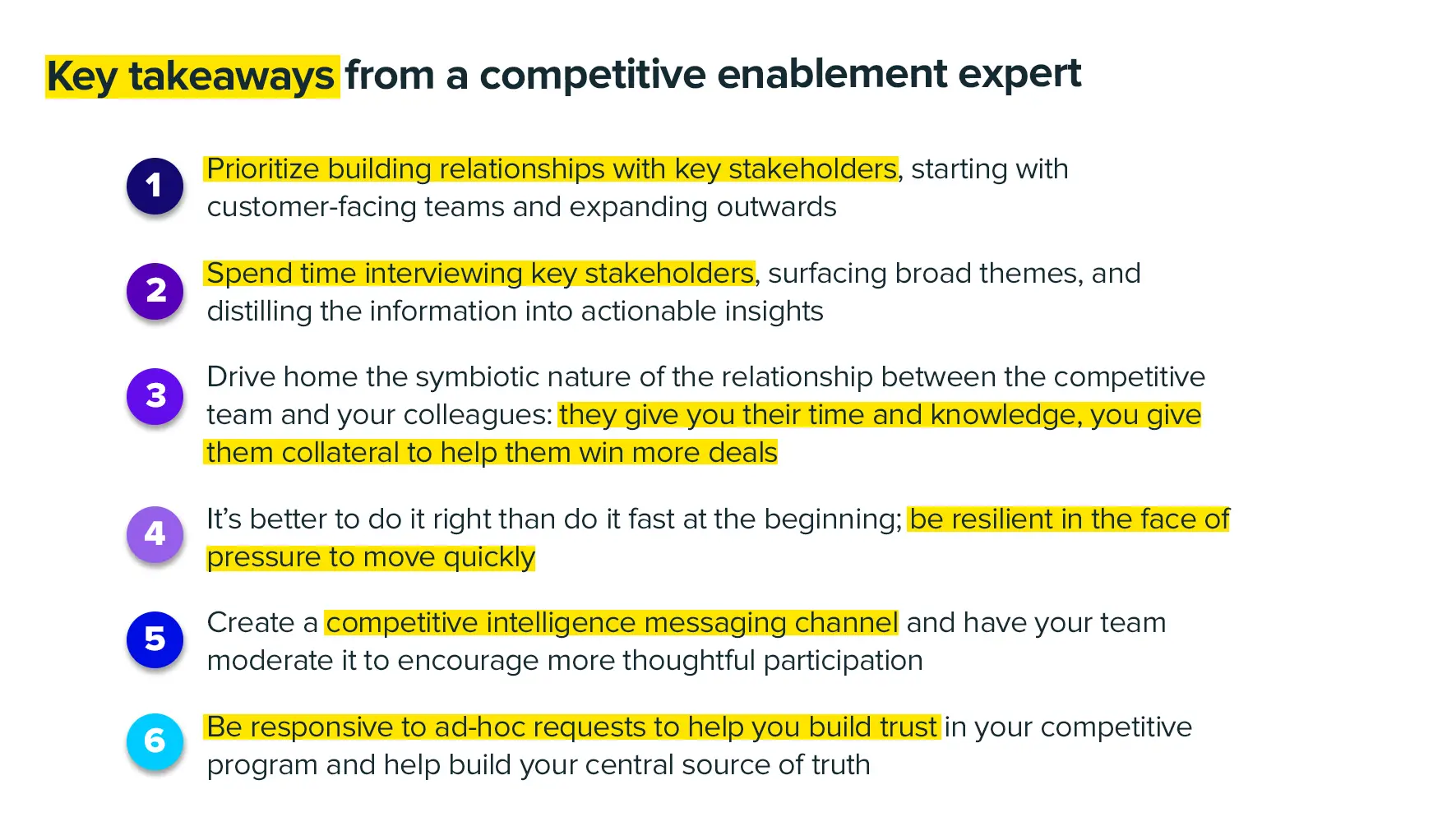

The sellers Alex enables, much like the ones at your company, will very likely find themselves in competitive deals against unknown and under-researched competition — i.e. competitors you won’t have a battlecard for.
That’s why Alex puts his efforts into creating a set of positioning statements that can be used in almost every competitive scenario.
Of course, anyone who’s gone through this exercise knows how difficult it is to formulate those statements, and then condense them into five or seven-word sentences.
That’s why Alex leans on relationships with key stakeholders.
“That process is really about creating relationships, setting it up as a two-way street…I want to learn from you and your experience in the field and what you’re going to get back is really clear talking points.”
The more active this two-way street is, the more buy-in and adoption you’re likely to get in your compete program.
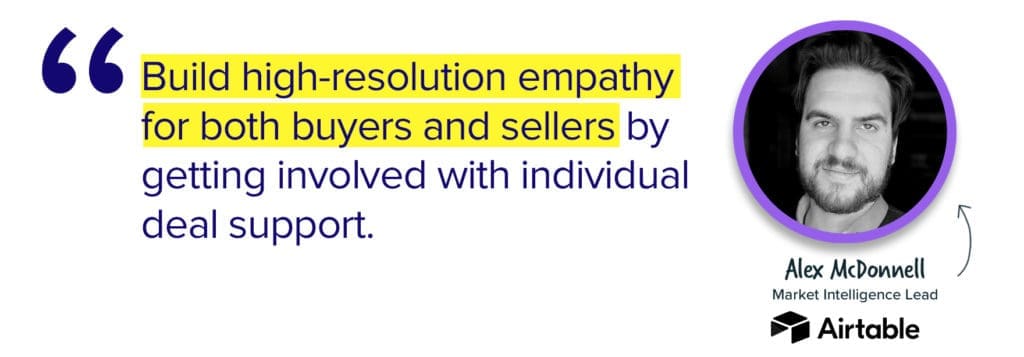

As soon as you position yourself as the competitive intelligence expert, you’re going to have people clamouring for your insight.
All that pressure to produce coming from different angles will inevitably light a fire under your seat and get you to jump into action.
But rushing things and having a lack of patience is a sure-fire way to make unforced, avoidable errors.
For Alex, moving too quickly and not getting input from enough voices across the organization have always been key factors in a lack of adoption.
“It’s almost always been because I probably rushed the process…of not only getting sellers and CSMs involved, but other perspectives around the organization.”
In order to balance out the bias towards urgency and action, you, as the competitive expert need to set the expectation around timelines and ask for patience.
Without that, you risk overstepping your bounds and painting your competitive program in a negative light, as Alex found out early in his career.
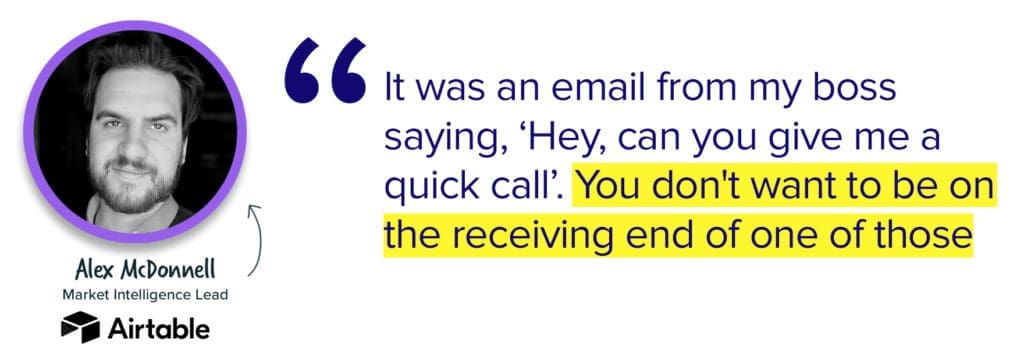

“I had some formative experiences where, as a team of one, I was like, ‘all right, this is my time to sort of jump on this news, get it out to the company, provide my hot take, and everyone is going to appreciate the clarity that I bring the point of view that I bring’. But I didn’t run it by anyone before I just blasted it out like sales team and exec team and marketing team….a couple of the takes I had in [the newsletter] were very questionable in terms of what we should do about it.”
Not everything you put out needs to be fully-baked. But you risk doing damage to your compete program without first establishing relationships with, and building an inner circle of, key stakeholders.
More than ‘just another Slack channel’, creating a dedicated competitive intelligence forum within your team’s internal messaging system is one of the best ways to:
But if the channel becomes a place for random link sharing without context, panic about losing competitors, and an overall bad time.
That’s why Alex’s team makes it part of their daily duties to moderate the Slack channel.
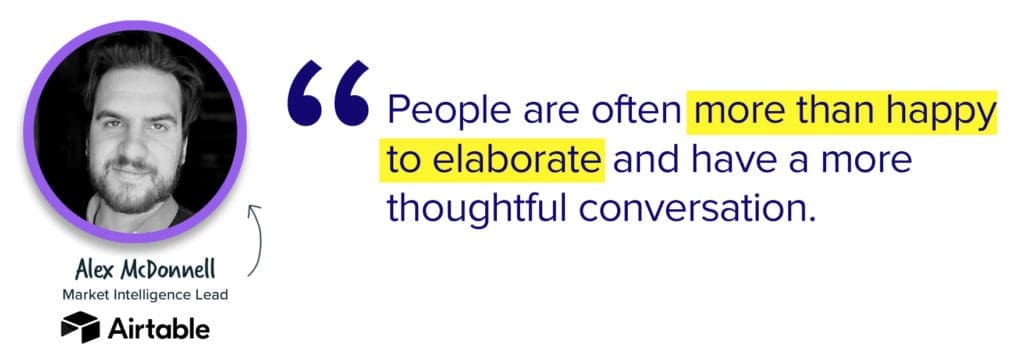

“If someone has posted something about the competition and hasn’t given context or their take on it, or what stood out to them, we’ll just ask, ‘Hey, Adam, thanks for sharing this. What stood out to you? What do you think this might mean for customers?’ And people are often more than happy to elaborate and have a more thoughtful conversation.”
There’s a balance to strike between a free-for-all and censorship — part of your competitive program’s success relies on widespread participation.
With the approach taken by Alex, the key is quickly replying to comments in the channel and then probing into the thought behind the comment to spur conversation.
His team sets the tone for the competitive channel, making it a valuable and essential place for the entire organization.
Impromptu requests can feel like a thorn in the side for some competitive teams — especially competitive teams of one.
But for Alex, the opportunities presented by one-off, in-the-moment, requests far outweigh their perceived annoyance.
Rather, the learnings that come from getting involved in a request with respect to a particular competitive deal are invaluable for forming a clear understanding of the pain points of people in your organization, and your customers.
“I don’t know how else you expect to build that high-resolution empathy for both your buyers and your sellers, other than getting involved in actual deals either or perhaps both, in my opinion, by getting involved with kind of the individual deal support with your sellers and/or with win-loss.”
What’s more, each request adds to the competitive intelligence knowledge bank you need to make your competitive program successful.
It’s not as if, once you’ve addressed a particular competitive request, that information falls into a black hole. The competitive intelligence gathered can be used to inform and strengthen battlecards and other competitive resources your team uses.
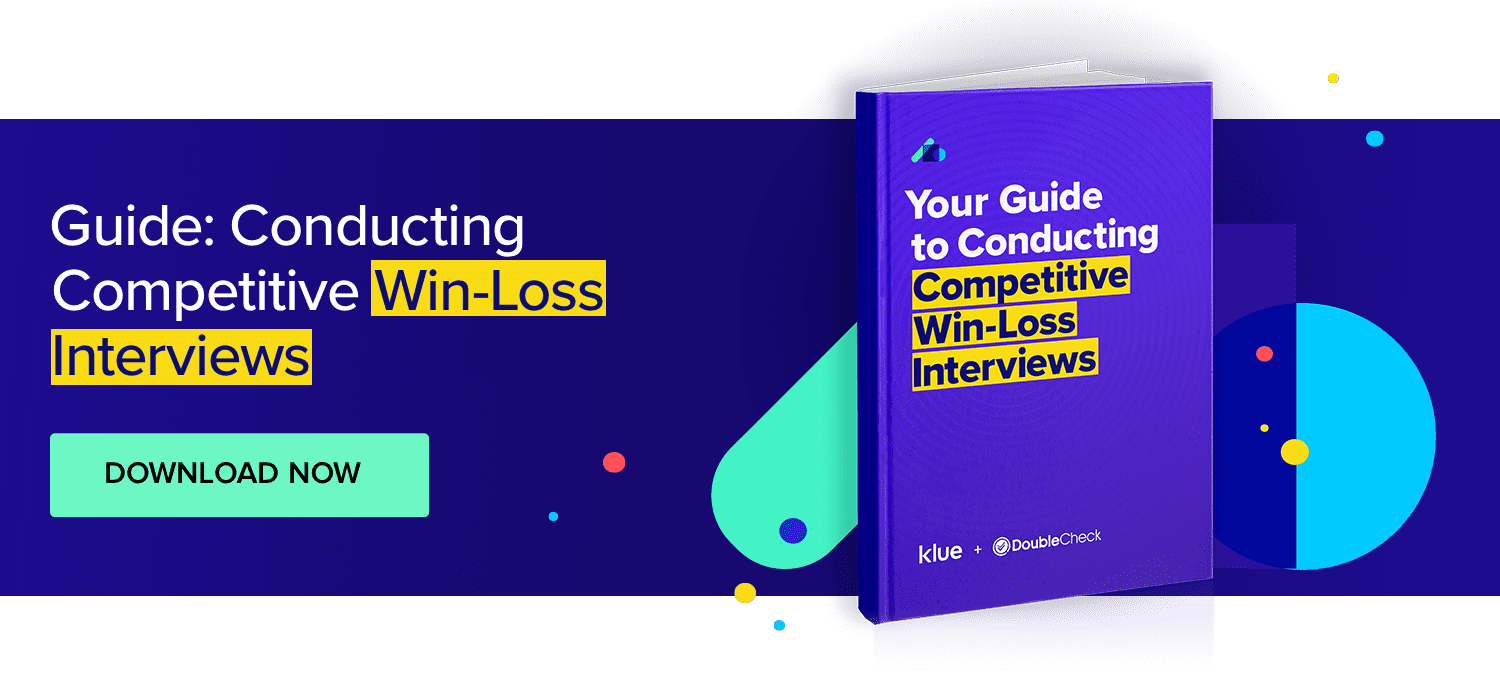



Competitive Enablement
The topic of Large Language Models (LLMs) has a lot of confusion. Here's what you need to know about how Klue is working with them.


Competitive Enablement
Product Marketing
If your competitive intel game is too strong for automation, too pure for data privacy, and too rebellious for accuracy — then Klue AI is probably not for you.
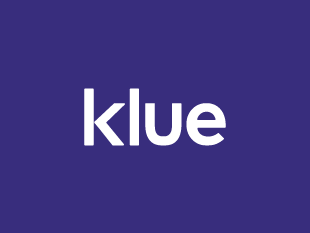

Let’s do it. Tell us a bit about yourself and we’ll set up a time to wow you.
Let's do it. Tell us a bit about yourself and we'll set up a time to wow you.
XLet's do it. Tell us a bit about yourself and we'll set up a time to wow you.
XSubscribe to get our latest AI functionality and news in your inbox.
XOur Buyer Pulse feature, set to launch in Q2 2024, offers valuable insights into the factors influencing buyer decisions in your pipeline. By signing up for the waitlist, we can better gauge interest and proactively engage with you to streamline the setup and integration process before the feature becomes widely available.
X